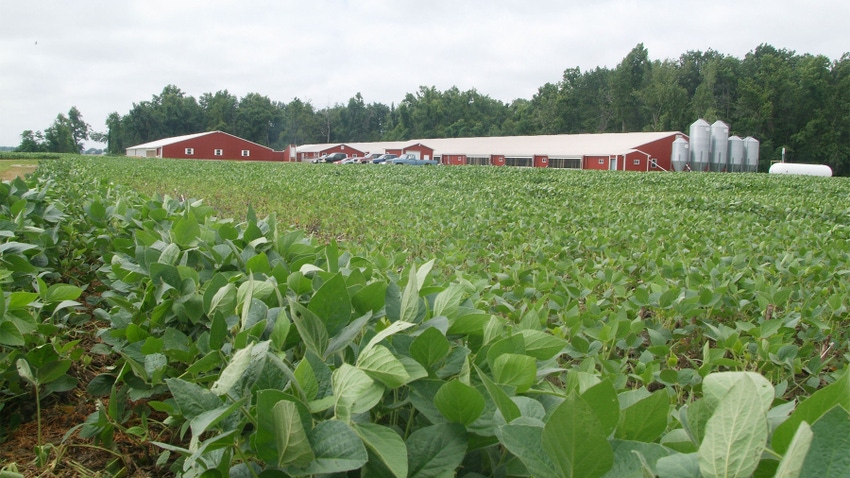
American farmers raising quality products benefits all of U.S. agriculture, and a recent study backs up the economic impact that pork and beef exports have on the nation’s corn and soybean industries.
A recent study by the Juday Group and released by the U.S. Meat Export Federation shows that in 2023, pork and beef exports of $18.1 billion contributed economic impact to the tune of 14.6% per bushel to the value of corn and 13.9% per bushel of soybeans.
That equates to 87 cents per bushel for 2023 corn at an average price of $5.95 per bushel, and $1.95 per bushel of soybeans based on an average 2023 price of $14.07.
On the soybean side of the ledger, the study shows that 2023 pork exports accounted for 96.8 million bushels of soybean usage. Pork exports also contribute a total economic impact of $8.12 billion to U.S. soybeans when looking at the $1.95 per bushel added value for the 4.165 billion bushels produced last year.
Pork and beef exports contributed an economic impact of $13.35 billion to U.S. corn, when using that 87 cent per bushel in added value for the 15.34 billion bushels produced in 2023.
According to the USMEF, a few records in pork exports were set in 2023, starting with 29.6% of U.S. pork and pork variety meat production being exported. Another record is the pork export value equates to $64 per head slaughtered last year. Pork export volume equates to 50 pounds per head slaughtered, 10.09 pounds of which were variety meats, also a record.
Getting more pork on U.S. consumers’ plates is always a mission of the pork industry, but global customers prove to be pork-buying allies, as pork exports have increased 36% since 2015, while pork production increased 11% over that same time.
International consumers have more of an appetite for variety meats than most American consumers. Variety meats are things such as feet, snouts, ears, tail, heart, liver, kidney, stomach and bladder.
In addition to being big end-users of corn and soybeans, hogs and cattle also consume dried distillers grains — a lot of DDGS. Pork and beef exports accounted for 3.07 million tons of U.S. DDGS last year, which indirectly adds about 4 cents per gallon to the average gross margin of an ethanol plant.
In a news release from the USMEF, a correlation was drawn between the quality of U.S. corn and soybeans as feed inputs and the hunger for American red meat products in the export market.
Randy Spronk, who raises hogs as well as corn and soybeans near Edgerton, Minn., says quality is key.
“Our production practices and the quality of our feed inputs is an important part of the story that USMEF promotes to international customers,” Spronk said in the USMEF release. “How we raise our soybeans, how we raise our corn, how we process our feed and the efficiencies we strive for — those are sustainable practices that help differentiate us from other beef and pork exporters.”
Finding a way into global markets can be tricky, as trading partners can be fickle, but this study shows that hungry buyers of one or two commodities can raise the value of others. A win for U.S. agriculture, and pork and beef, lead the way.
About the Author(s)
You May Also Like






